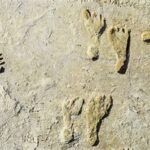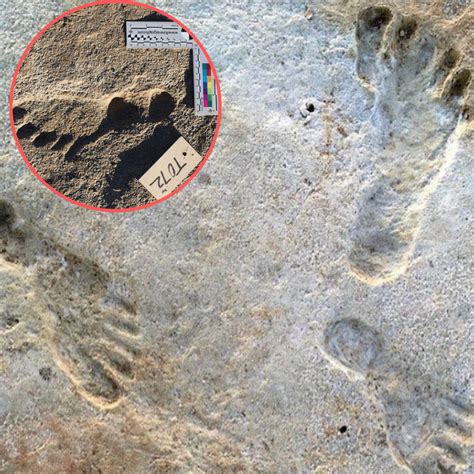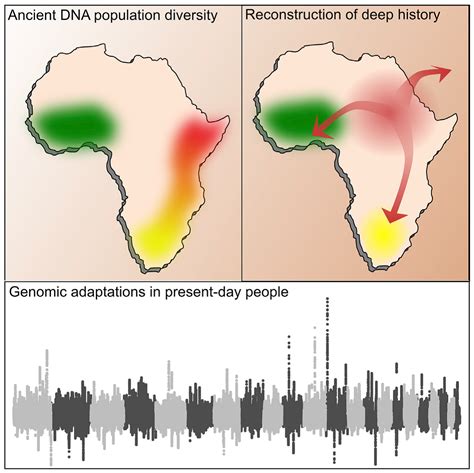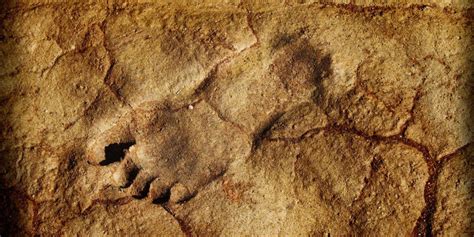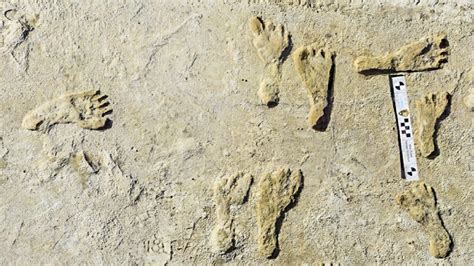
Newly discovered fossilized footprints in White Sands National Park, New Mexico, are pushing back the timeline of human presence in North America by thousands of years, suggesting humans were in the Americas as early as 23,000 years ago, during the height of the last glacial period.
The research, published in the journal Science, provides compelling evidence challenging the previously held consensus that humans arrived in North America around 13,000 to 16,000 years ago, coinciding with the retreat of massive ice sheets. The findings are based on radiocarbon dating of seeds found both above and below the layers containing the footprints, offering a robust chronological framework.
“The footprints unequivocally demonstrate the presence of humans in North America during the Last Glacial Maximum,” said Professor Matthew Bennett of Bournemouth University, one of the study’s lead authors. “This challenges existing models of initial human migration into the Americas and opens up new avenues for understanding the early peopling of the continent.”
The discovery, initially made in 2009, gained prominence as researchers meticulously analyzed and dated the hundreds of footprints found within the park. The footprints are predominantly those of teenagers and children, suggesting that this area might have served as a gathering place or a playground for younger members of the community. Adult footprints are also present but less frequent.
The implications of this discovery are significant, prompting a re-evaluation of migration routes, settlement patterns, and the adaptability of early humans to harsh environmental conditions. The White Sands footprints provide a tangible link to a distant past, offering a glimpse into the lives of people who thrived in a landscape vastly different from today.
Dating the Past: A Scientific Breakthrough
The accuracy of the dating process is crucial to the significance of this discovery. Researchers used radiocarbon dating on Ruppia seeds – an aquatic plant commonly found in the area – embedded within the sediment layers containing the footprints. This method provided a range of dates, consistently placing the footprints between 21,000 and 23,000 years ago.
“The dates from the seeds are internally consistent and stratigraphically constrained,” explained Dr. Kathleen Springer, a research geologist with the U.S. Geological Survey and a co-author of the study. “The footprints are sandwiched between reliably dated layers, providing a solid chronological framework.”
Previous claims of pre-Clovis occupation sites in North America have often been met with skepticism due to dating uncertainties or a lack of definitive artifacts. However, the White Sands footprints offer a uniquely compelling and well-dated piece of evidence. The reliability of the radiocarbon dating, combined with the sheer number and distinct nature of the footprints, has solidified the credibility of the findings within the scientific community.
Life During the Last Glacial Maximum
The Last Glacial Maximum (LGM) was a period of intense cold and aridity, with massive ice sheets covering much of North America. Sea levels were significantly lower, and the landscape was dramatically different from what we see today. Despite these challenging conditions, the presence of humans in the White Sands area suggests remarkable adaptability and resourcefulness.
During the LGM, the Tularosa Basin, where White Sands National Park is located, was a closed basin containing a large lake and associated wetlands. This would have provided a crucial source of water and sustenance for both humans and animals. Fossil evidence indicates the presence of megafauna such as mammoths, giant ground sloths, and dire wolves, which would have served as potential prey for early human hunters.
“The environment during the LGM was harsh, but the presence of a lake and wetlands provided a refuge for both humans and animals,” noted Dr. David Bustos, the park’s resource manager, who was involved in the initial discovery. “The footprints tell a story of resilience and adaptation in the face of adversity.”
The footprints themselves offer insights into the activities and social structure of these early inhabitants. The prevalence of children’s footprints suggests that the area might have been a safe and familiar place for families. The varying sizes and depths of the footprints indicate a diverse population, including both adults and adolescents. The patterns of the footprints also suggest different types of activities, such as walking, running, and perhaps even playing.
Implications for Migration Theories
The discovery challenges the long-held “Clovis First” theory, which posits that the Clovis people, who appeared in North America around 13,000 years ago, were the first inhabitants of the continent. The Clovis culture is characterized by distinctive fluted spear points found at numerous archaeological sites across North America. For decades, the Clovis people were considered the ancestors of all modern Native Americans.
The White Sands footprints, however, predate the Clovis culture by several thousand years, indicating that humans were present in North America well before the Clovis people arrived. This finding supports alternative migration theories, such as the possibility of multiple waves of migration from Asia, or even the possibility of coastal migration routes along the Pacific coast.
“The White Sands footprints provide compelling evidence that humans were in North America much earlier than previously thought,” said Dr. Vance Holliday, an archaeologist at the University of Arizona. “This forces us to reconsider the timing and routes of human migration into the Americas.”
One possibility is that early humans migrated to North America via the Bering Land Bridge, a landmass that connected Siberia and Alaska during the LGM. As sea levels rose, the Bering Land Bridge was submerged, cutting off access to North America from Asia. However, the White Sands footprints suggest that this migration may have occurred earlier than previously believed, perhaps even before the Bering Land Bridge was fully submerged.
Another possibility is that early humans migrated to North America along the Pacific coast, using boats to travel down the coastline. This theory is supported by the discovery of ancient coastal sites in South America that also predate the Clovis culture. It’s possible that these coastal migrants eventually spread inland, reaching the White Sands area.
Future Research and Preservation Efforts
The White Sands National Park is now a focal point for ongoing research and preservation efforts. Scientists are continuing to excavate and analyze the footprints, hoping to gain further insights into the lives and activities of these early inhabitants. They are also studying the surrounding environment to better understand the ecological conditions that prevailed during the LGM.
“We are committed to preserving these invaluable footprints for future generations,” said Marie Patou-Mathis, director of the Muséum National d’Histoire Naturelle in Paris. “We are working closely with the National Park Service to protect the site from erosion and other threats.”
One of the challenges in preserving the footprints is the delicate nature of the sediment in which they are embedded. The footprints are vulnerable to erosion from wind and rain, as well as damage from human activity. The National Park Service has implemented a number of measures to protect the site, including restricting access to certain areas, installing protective barriers, and conducting regular monitoring.
Researchers are also using advanced imaging techniques, such as 3D scanning and photogrammetry, to create detailed digital models of the footprints. These models will allow them to study the footprints in greater detail and to share the findings with researchers and the public worldwide.
The discovery of the White Sands footprints has opened a new chapter in the story of human migration into the Americas. It has challenged long-held assumptions and has inspired new research and exploration. As scientists continue to study the footprints and the surrounding environment, they will undoubtedly uncover even more secrets about the lives of these early inhabitants.
The Cultural and Ethical Considerations
It is imperative to acknowledge the ethical and cultural implications of this discovery. The knowledge gained from the White Sands footprints has profound implications for understanding the history and heritage of Indigenous peoples in the Americas. Collaborating with tribal communities is paramount in interpreting the significance of these findings and ensuring respectful stewardship of ancestral sites.
Many Native American tribes have oral traditions that speak of their ancestors having been present in North America for tens of thousands of years. The White Sands footprints provide scientific evidence that supports these oral traditions, validating the historical knowledge of Indigenous peoples.
“It’s important to recognize that this discovery has deep cultural significance for Native American tribes,” said Dr. Kim Carpenter, an archaeologist who specializes in Indigenous archaeology. “We need to work closely with tribal communities to ensure that their perspectives are incorporated into our understanding of the past.”
The National Park Service has established a consultation process with local tribes to ensure that their concerns and perspectives are taken into account in all aspects of the research and preservation efforts. This includes sharing research findings with tribal communities, seeking their input on interpretation strategies, and protecting the site from any activities that could be disrespectful to their cultural heritage.
A Glimpse into the Past: What the Footprints Reveal
The White Sands footprints offer a rare glimpse into the daily lives of early humans in North America. The size and shape of the footprints provide clues about the individuals who made them, including their age, sex, and weight. The patterns of the footprints reveal information about their activities, such as whether they were walking, running, or carrying objects.
One of the most intriguing aspects of the footprints is the prevalence of children’s footprints. This suggests that the White Sands area might have been a safe and familiar place for families. The children may have been playing near the lake or helping their parents with tasks such as gathering food or water.
“The footprints tell a story of a community that thrived in this challenging environment,” said Dr. Sally Reynolds, a paleoanthropologist who studies ancient footprints. “They offer a tangible connection to the past, allowing us to imagine what life was like for these early inhabitants.”
The discovery of the footprints has also raised questions about the relationship between early humans and megafauna. Fossil evidence indicates that the White Sands area was home to a variety of large mammals, such as mammoths, giant ground sloths, and dire wolves. It’s possible that early humans hunted these animals for food, or that they competed with them for resources.
Further research is needed to fully understand the interactions between humans and megafauna in the White Sands area. However, the footprints provide valuable evidence that can help scientists to reconstruct the ecological dynamics of this ancient landscape.
The Ongoing Debate: Challenging Established Paradigms
The discovery of the White Sands footprints has ignited a vigorous debate within the archaeological community. While many scientists have embraced the findings as compelling evidence of pre-Clovis occupation in North America, others remain skeptical.
One of the main points of contention is the reliability of the radiocarbon dating. Some critics argue that the dates obtained from the Ruppia seeds may be inaccurate due to contamination or other factors. They suggest that further dating methods should be used to confirm the age of the footprints.
Another point of debate is the interpretation of the footprints themselves. Some critics argue that the features identified as footprints could be natural formations or animal tracks. They suggest that more detailed analysis is needed to confirm that the features are indeed human footprints.
Despite these criticisms, the majority of scientists agree that the White Sands footprints provide strong evidence of pre-Clovis occupation in North America. The reliability of the radiocarbon dating, combined with the sheer number and distinct nature of the footprints, has convinced many researchers that humans were present in the Americas much earlier than previously thought.
The ongoing debate surrounding the White Sands footprints is a healthy part of the scientific process. It encourages researchers to critically evaluate the evidence and to refine their interpretations. As more research is conducted, a clearer picture of the early peopling of the Americas will undoubtedly emerge.
FAQ: Frequently Asked Questions About the White Sands Footprints
1. What exactly was discovered at White Sands National Park?
Researchers discovered hundreds of fossilized footprints belonging to humans and Ice Age animals, dating back as far as 23,000 years ago. The footprints are primarily those of teenagers and children, suggesting a family-oriented presence in the area.
2. How do these footprints change our understanding of human history in the Americas?
The footprints push back the established timeline of human arrival in North America by approximately 7,000 to 10,000 years. Prior to this discovery, the “Clovis First” theory suggested that the Clovis people, who appeared around 13,000 years ago, were the first inhabitants of the continent. The White Sands footprints indicate that humans were present in North America significantly earlier than the Clovis culture.
3. How were the footprints dated, and how reliable are the dates?
The footprints were dated using radiocarbon dating of Ruppia seeds (an aquatic plant) found in the sediment layers above and below the footprints. These dates consistently place the footprints between 21,000 and 23,000 years ago. The dates are considered highly reliable because they are internally consistent and stratigraphically constrained, meaning the seeds were found within well-defined layers of sediment.
4. What was the environment like in White Sands during the time the footprints were made?
During the Last Glacial Maximum, the White Sands area was a closed basin containing a large lake and associated wetlands. This provided a crucial source of water and sustenance for both humans and animals, including megafauna such as mammoths and giant ground sloths. The environment was harsh but supported life, making it a refuge for early inhabitants.
5. What are the implications of this discovery for Native American history and culture?
The discovery supports the oral traditions of many Native American tribes, which speak of their ancestors having been present in North America for tens of thousands of years. It validates the historical knowledge of Indigenous peoples and underscores the importance of collaborating with tribal communities in interpreting the significance of these findings and ensuring respectful stewardship of ancestral sites.
Continuing the Narrative: Unraveling the Mysteries of the Past
The discovery at White Sands National Park is not merely an isolated event; it is a crucial piece in the complex and ever-evolving puzzle of human history. The footprints provide a tangible link to a distant past, offering a glimpse into the lives of people who adapted and thrived in a landscape vastly different from our own.
The ongoing research and preservation efforts at White Sands are essential for unlocking further secrets about the early peopling of the Americas. By continuing to study the footprints and the surrounding environment, scientists can gain a deeper understanding of human migration patterns, technological advancements, and cultural practices.
Moreover, the White Sands discovery highlights the importance of protecting and preserving archaeological sites for future generations. These sites are not only repositories of scientific information but also valuable cultural resources that connect us to our shared human heritage.
As we continue to explore the past, we must also be mindful of the ethical and cultural implications of our discoveries. Collaborating with Indigenous communities, respecting their traditions, and ensuring the respectful stewardship of ancestral sites are paramount to fostering a more inclusive and accurate understanding of human history.
The White Sands footprints are a testament to the resilience and adaptability of the human spirit. They remind us that our species has a long and rich history in the Americas, a history that is still being written. By embracing new discoveries, challenging established paradigms, and working together, we can continue to unravel the mysteries of the past and gain a deeper appreciation for the diversity and complexity of the human experience.



